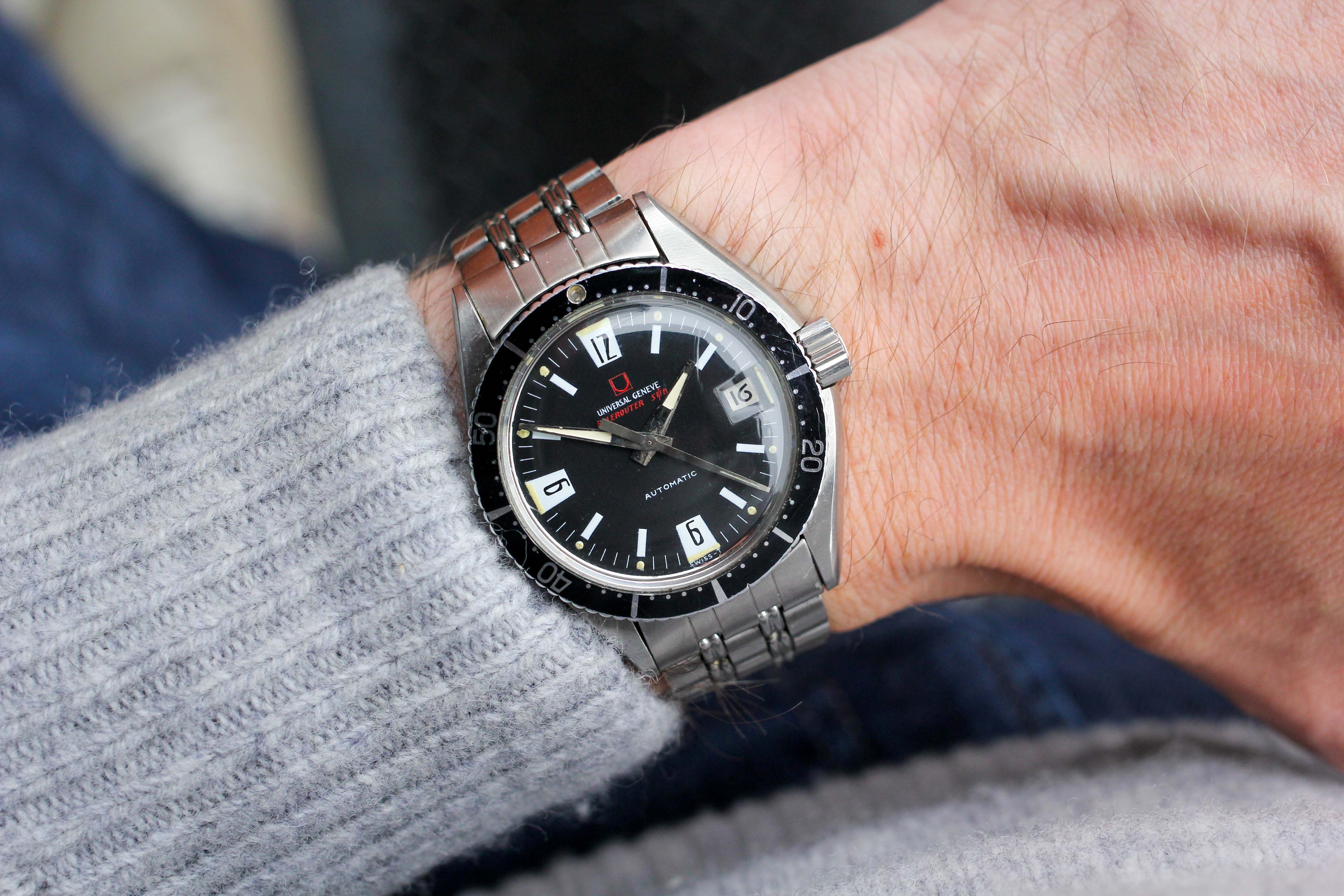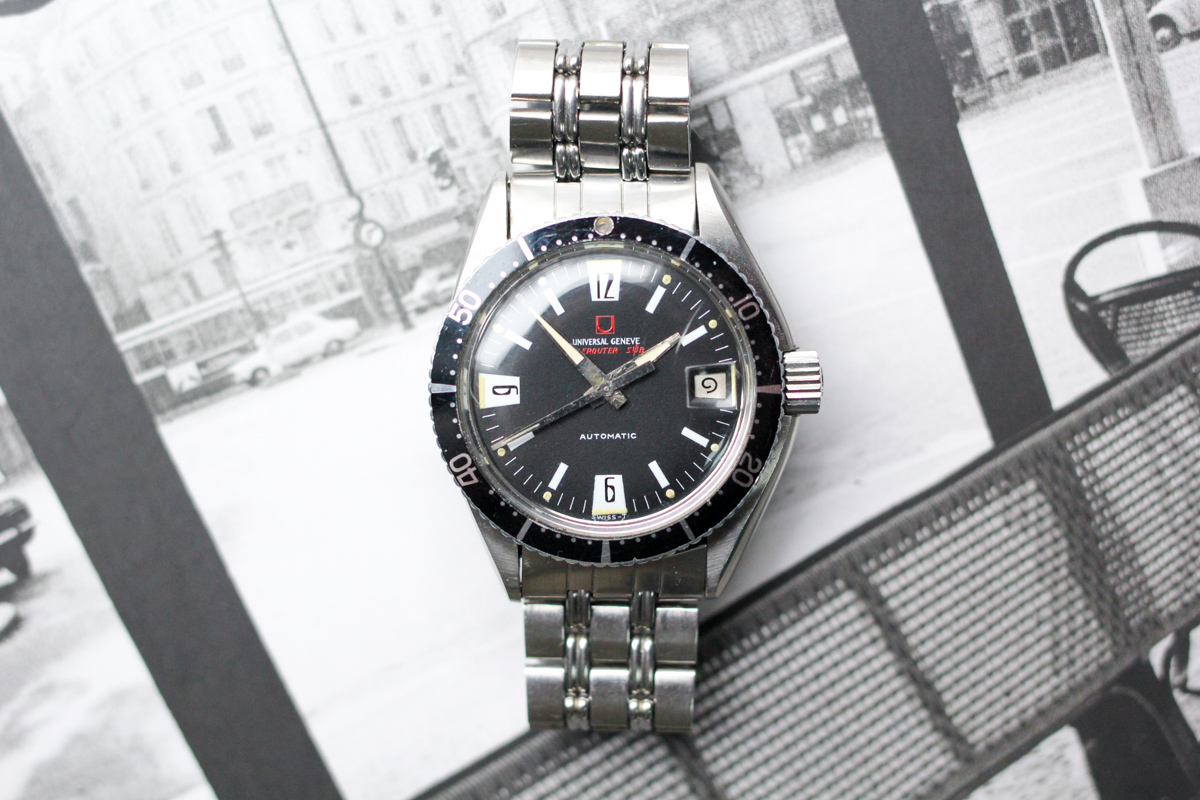Within the world of sports watches, the dive watch has always stood out as a sterling example of practicality. As divers began to explore the deepest corners of the ocean, the need for a wristwatch that could withstand depth-related pressure and accurately time decompression stops was not only desirable – it was necessary for survival. Irrespective of brand, the earliest iterations of dive watches are among the most highly sought-after sports watches in the vintage market today, and within this landscape, the second generation Polerouter Sub is somehow still a sleeper in the dive watch world.
For example, this iteration of the Polerouter Sub shares many attributes commonly found on far more expensive dive watches: a 38mm case, red text on the dial, a big crown, “open 9” date wheel, a Gay Frères bracelet, and a nicely-finished automatic movement powered by a micro rotor that allows for a case thickness of 12.8mm including the crystal. Out of reach for the non-millionaire watch lover, right? Wrong.
Universal Geneve created an in-house automatic movement utilizing a micro rotor (or “Microtor”) for their Polerouter line, which was designed by the illustrious Gerald Genta and became a classic dress watch for many years. In the early 1960’s, Universal expanded the line to include dive watches, beginning with the super compressor Polerouter Subs that are highly sought after today and moving to an asymmetrical case shape in its second generation (the iteration you see here). The second generation Polerouter Sub was produced with two main dial designs: one with art deco numerals at 12, 6, and 9, and another with identical lume wedges (one of which, I previously owned). These watches also came with three different bezel combinations – the one you see here, a “countdown” version of the bezel (in which the numbers are reversed), and 12-hour Bakelite bezels that were produced in multiple colors (burgundy, blue, and green).
Despite all of the combinations that I pointed out above, it’s remarkably rare to come across a Polerouter Sub in the wild. I believe that this watch still presents a terrific value proposition in a world of soaring vintage prices, as the looks are unique, the movement is beautiful / produced in-house, and examples in good condition are extremely rare (seriously – I’d estimate that only 5-10 correct and desirable examples of the asymmetrical Polerouter Subs surface each year). The auction scene will eventually wake up to the beauties of the Polerouter Sub, but until that happens, consider it “open season” and get as many as you can.

The Nitty Gritty
The second generation of Polerouter Subs are interesting beasts. There are two different dial versions (the other can be seen in my collection as well), three different lume patterns, three different hand combinations, and two different case shapes – all with little to no documentation. It can be a total minefield, even if you know what you’re doing. Luckily, this one came from the second owner, and my good friend Nick (of WatchPatina.com fame) actually gifted me an old magazine advertisement that showed this exact combination of dial, lume, hands, and case (shown below). The lume is immaculately preserved on the dial, and the case is sharp. The hour and minute hands were re-lumed at some point, but the aesthetics of everything else were so great that I was happy to overlook that one fault.
This version of the Polerouter Sub utilizes the in-house I-69 “Microtor” automatic movement, that had a high degree of finishing and a weighted micro rotor that allowed for a much thinner profile than other divers of the era. Prices have risen since I was able to acquire my two examples, but they’re still undervalued in my opinion. It’s rare to find one. Even rarer to find one in great condition. Add in the technical prowess of the movement and the totally unique aesthetics? For my money, I’d rather have it than a run-of-the-mill Rolex Submariner.


